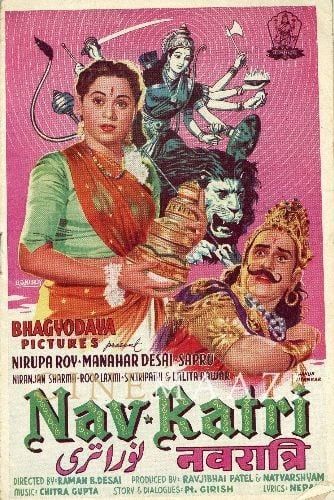This section is for paid subscribers only. Our subscription is only $3700/- for one full year.
You get unlimited access to all paid section and features on the website with this subscription.
Subscribe to read full article
This section is for paid subscribers only. Our subscription is only $37/- for one full year.
You get unlimited access to all paid section and features on the website with this subscription.
Not ready for a full subscription?
You can access this article for $2, and have it saved to your account for one year.
- Release Date13/08/1939
- GenreMythology
- FormatB-W
- LanguageTamil
- Run Time214 min
- Length5791 meters
- Censor RatingU
After Chintamani (1937) and Ambikapathi (1937), M.K. Thyagaraja Bhagavathar (MKT) produced and acted in Thiruneelakandar, a mythological plot.
Ambalavanar (MKT), a potter lives with his wife Neelayadakshi (T.R. Pappa). Once, he listens to a sage’s discourse on Gora Kumbara about Lord Shiva and becomes a spiritual person. He spends his earnings on charity by presenting clay plates to people and spends most of his time visiting temples. He chants “Neelakantam” regularly and people start referring to him as Thiruneelakandar. Once he encounters Kalavathy (S.S. Rajamani), a courtesan at a temple and a daasi (prostitute) performing a dance and she instantly fall for him. Ambalavanar also likes her. Kalavathy tries to propose to him a couple of times but fails. Once he gets stuck in the rain while returning from a temple and takes shelter in the verandah of Kalavathy’s home. Kalavathy’s sister spits betel juice on him inadvertently and informs Kalavathy about it. She rushes out, apologizes for her sister’s mistake, and takes him inside. Kalavathy presents him with new clothes and requests him to accept her. Ambalavanar, who likes her, also decides to accept her. When Kalavathy mentions about the day being auspicious for their union, Thiruneelakandar realizes it is an auspicious day dedicated to God; he desires to remain celibate and leaves her, promising to return next day to consummate their relationship. When he returns home, his wife becomes suspicious of him, seeing him in new clothes. He explains the entire chain of events and she pleads with him to forget Kalavathy. When he refuses and confirms his liking for her, she faints. He approaches her when she gains consciousness but she refuses and swears in the name of God that he should not touch her henceforth. Her strong stand forces Ambalavanar to take an oath in the name of God not to touch or think about any woman from that day and he becomes a staunch celibate. The next day, he goes to meet Kalavathy, explains his vow, and convinces her to shun her profession (prostitution) and lead a normal life.
Though he and his wife live under the same roof, they lead parallel lives. Years roll by. To test them, Lord Shiva visits them in the form of an ascetic, gives them a begging bowl made of clay, and requests them to preserve it. He tells them that it is a precious heirloom that has been with his family for generations and that he would collect it at a later date. When the ascetic returns after a few months, he makes the bowl vanish and demands it from Thiruneelakandar, who is unable to find it. Thiruneelakandar apologizes and offers to give him a new bowl made out of gold or any other material. The ascetic gets angry and demands the same bowl. He drags Thiruneelakandar to court and demands that he should prove his innocence by taking an oath while holding his wife’s hand and immersed in the pond. The court agrees with his demand and orders Thiruneelakandar to do so. Thiruneelakandar pleads with the ascetic, explains his vow and his inability to touch a woman; and submerges himself in the pond holding a stick with his wife. When they come out, they are transformed into a young couple! The ascetic appears as Lord Shiva with his wife Parvathi and advises Thiruneelakandar to lead a normal family life for a few more years and then join him. Thiruneelakandar proves the strength of his prayers before the people of the city who had gathered to see him prove his innocence.
Thiruneelakandar ran for one year, thus creating history and establishing MKT as an actor.
The technique “Russian Angle” was first used in this film when two people delivered dialogues. This was the first film produced by M.K. Thyagaraja Bhagavathar. Famous Nadaswaram Vidwan (expert) T.N. Rajarathinam Pillai made a guest appearance in the film. The pond scenes were shot inside the temple at Thiruvanmiyur (Madras), which was then a small village.
T.R. Pappa was the debut heroine. For the popular director Raja Sandow, it was the first biggest hit with MKT. The film was based on the life history of Thiruneelakanda Nayanar, one of the 63 Nayanmars popular in South Indian religious circles.
The film had 13 super hit songs. Some of the highly appreciated songs were ‘Unnazhagai Kana Iru Kangal Podhathey...’, ‘Neelakanda! Neelakanda...’, ‘Chidambara Naadha Thiruvarul Tharai...’, ‘Dheena Karunagarane Nataraja...’, ‘Maraivai Pudhaitha odu maraindha mayam edhl Therai...’, ‘Oru Naal Oru Pozhudhagilum...’, ‘Sara Sarangal varum suzhandre...’, Pavala Vazhmal Varai... and ‘Adhi Devane Thillai Nadha...’
It was the first film to succeed even in its re-release after 20 years.
[from the book Pride of Tamil Cinema: 1931 to 2013, G Dhananjayan. Blue Ocean Publishers. 2014]

Cast
Crew
-
BannerTrichy Thiagaraja Films
-
Director
-
Producer
-
Music Director
-
Lyricist
-
Story Writer
-
Screenplay
-
Dialogues
-
Cinematography
-
Editing
-
Art Director/Production Design






.jpg)



